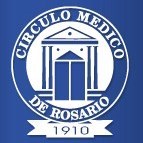Increase of the diagnostic yield of thyroid sonogram (reported with t-rads clasification) when a fine needle aspiration cytology (reported with bethesda system) is added
Keywords:
T-RADS classification, Bethesda system, Thyroid surgery, Thyroid cancer diagnosisAbstract
But when ultrasonography only shows characteristics compatible with benignity, a FNAB indication is questionable and that must be justified. Could T-RADS classification efficiently identify which nodule requires a FNAB and which does not? That decision will linked to which patients should be undergo a thyroid surgery.
Objective: to analyze T-RADS capability with and without Bethesda system to optimize the diagnosis of thyroid pathology.
Material and methods: a total of 139 nodules which required surgery were included. They were previously evaluated with ultrasonography and FNAB. A same operator classified the T-RADS (SMB), the Bethesda system (OMB) and performed the surgeries (JLN). For this work, definitions were homogenized as follows: T-RADS II-III-IVa and Bethesda II-III: Low suspicion of malignancy; T-RADS IVb-V-VI and Bethesda IV-V-VI: High suspicion of malignancy.
Conclusions: the evidence suggested that when a thyroid nodule shows low suspicion of malignancy by ultrasonography (T-RADS II-III-IVa), the indication of a FNAB did not add statistically significant diagnostic benefit. When a thyroid nodule shows high suspicion of malignancy (T-RADS IVb-V-VI), a FNAB added significant diagnostic accuracy.
Downloads
References
2. Guth S, Theune U, Aberle J y col. Very high prevalence of thyroid nodules detected by high frequency (13 MHz) ultrasound examination. Eur J Clin Invest 39:699-706, 2009.
3. Gharib H, Papini E, Garber JR y col. AACE/ACE/AME Task Force on Thyroid Nodules. American Association of Clinical Endocrinologists, American College of Endocrinology, Associazione Medici Endocrinologi Medical Guidelines for Clinical Practice for the Diagnosis and management of Thyroid Nodules –2016 Update. Endocr Pract 2016;22:622-39, 2016.
4. Ezzat S, Sarti DA, Cain DR, Braunstein GD. Thyroid incidentalomas: prevalence by palpation and ultrasonography. Arch Intern Med 154:1838-1840,1994.
5. Papini E, Guglielmi R, Bianchini A y col. Risk of malignancy in nonpalpable thyroid nodules: predictive value of ultrasound and color-Doppler features. J Clin Endocrinol Metab 87:1941-1946, 2002.
6. Harach HR, Franssila KO, Wasenius VM. Occult papillary carcinoma of the thyroid: a normal finding in Finland—a systemic autopsy study. Cancer 56:531–538, 1985.
7. Horvath E, Majlis S, Rossi R y col. An ultrasonogram reporting system for thyroid nodules stratifying cancer risk for clinical management. J Clin Endocrinol Metab 90(5):1748-51, 2009.
8. Haugen BR, Alexander EK, Bible KC y col. 2015 American Thyroid Association Management Guidelines for Adult Patients with thyroid Nodules and Differentiated Thyroid Cancer: The American Thyroid Association Guidelines Task Force on Thyroid Nodules and Differentiated Thyroid Cancer. Thyroid 26 1-133, 2016.
9. Baloch ZW, Alexander EK, Gharib H, Raab SS. Chapter 1. En: SZ Ali y ES Cibas (eds) The Bethesda System for Reporting Thyroid Cytopathology Springer, New York, 2010.
10. Yoon JH, Lee HS, Kim E-K, Moon HJ, Kwak JY. Malignancy Risk Stratification of Thyroid Nodules: Comparison between the Thyroid Imaging Reporting and Data System and the 2014 American Thyroid Association Management Guidelines. Radiology 278:917-924, 2016.
11. Moon HJ, Kim EK, Kwak JY. Malignancy risk stratification in thyroid nodules with benign results on cytology: combination of thyroid imaging reporting and data system and Bethesda system. Ann Surg Oncol 21:1898-1903, 2014.
12. Moon HJ, Kim EK, Yoon JH, Kwak JY. Malignancy risk stratification in thyroid nodules with nondiagnostic results at cytologic examination: combination of thyroid imaging reporting and data system and the Bethesda system. Radiology 274:287-295, 2015.
13. Heller MT, Gilbert C, Ohori NP, Tublin ME. Correlation of Ultrasound Findings with the Bethesda Cytopathology Classification for Thyroid Nodule Fine-Needle Aspiration: A Primer for Radiologists. AJR 201:487-494, 2013.
14. Rahal Jr A, Falsarella PM, Rocha RD y col. Correlation of Thyroid Imaging Reporting and Data System [TI-RADS] and fine needle aspiration: experience in 1,000 nodules.
Einstein 14:119-23, 2016. Disponible en: https://www.ncbi.nlm.nih.gov/pmc/articles/PMC4943343/
15. American College of Radiologist. ACR Ti-RADS Steering Committee. Disponible en: https://www.acr.org/Clinical-Resources/Reporting-and-Data-Systems/TI-RADS (Consultado el 24/04/2018)
16. Kim EK, Park CS, Chung WY y col. New Sonographic Criteria for Recommending Fine-Needle Aspiration Biopsy of Nonpalpable Solid Nodules of the Thyroid. AJR 178(3):687–691,2012.
17. Bongiovanni M, Spitale A, Faquin WC y col. The Bethesda System for Reporting Thyroid Cytopathology: A metaanalysis. Acta Cytol 56:333–339, 2012.
18. Hershman JM. The Bethesda System for Reporting Thyroid Cytopathology is effective for clinical management of thyroid nodules. Clin Thyroidol 2013;25:16–17.
19. Sheffield BS, Masoudi H, Walker B, Wiseman SM. Preoperative diagnosis of thyroid nodules using the Bethesda System for Reporting Thyroid Cytopathology: A comprehensive review and meta-analysis. Expert Rev Endocrinol Metab 9:97–110, 2014.
20. Adamczewski Z, Lewiński A. Proposed algorithm for management of patients with thyroid nodules/focal lesions, based on ultrasound (US) and fine-needle aspiration biopsy (FNAB); our own experience. Thyroid Res 6:6 , 2013.
21. Cavaliere A, Colella R, Puxeddu E y col. A useful ultrasound score to select thyroid nodules requiring fine needle aspiration in an iodine-deficient area. J Endocrinol Invest 32:440-444, 2009.
22. Petrone L, Mannucci E, De Feo ML y col. A simple ultrasound score for the identification of candidates for fine needle aspiration of thyroid nodules. J Endocrinol Invest 35:720–4, 2012.
23. Remonti LR, Kramer CK, Leitão CB y col. Thyroid ultrasound features and risk of carcinoma: a systematic review and meta-analysis of observational studies. Thyroid 25:538–50, 2015.
24. Vargas-Uricoechea H, Meza-Cabrera I, Herrera-Chaparro J. Concordance between the TIRADS ultrasound criteria and the BETHESDA cytology criteria on the nontoxic thyroid nodule. Thyroid Research 10:1, 2017.
25. Haut ER, Pronovost PJ. Surveillance bias in outcomes reporting. JAMA 305:2462–3,2011.
Published
How to Cite
Issue
Section
License
Licencia Atribución-CompartirIgual 4.0 Internacional (CC BY-SA 4.0)
https://creativecommons.org/licenses/by-sa/4.0/deed.es






